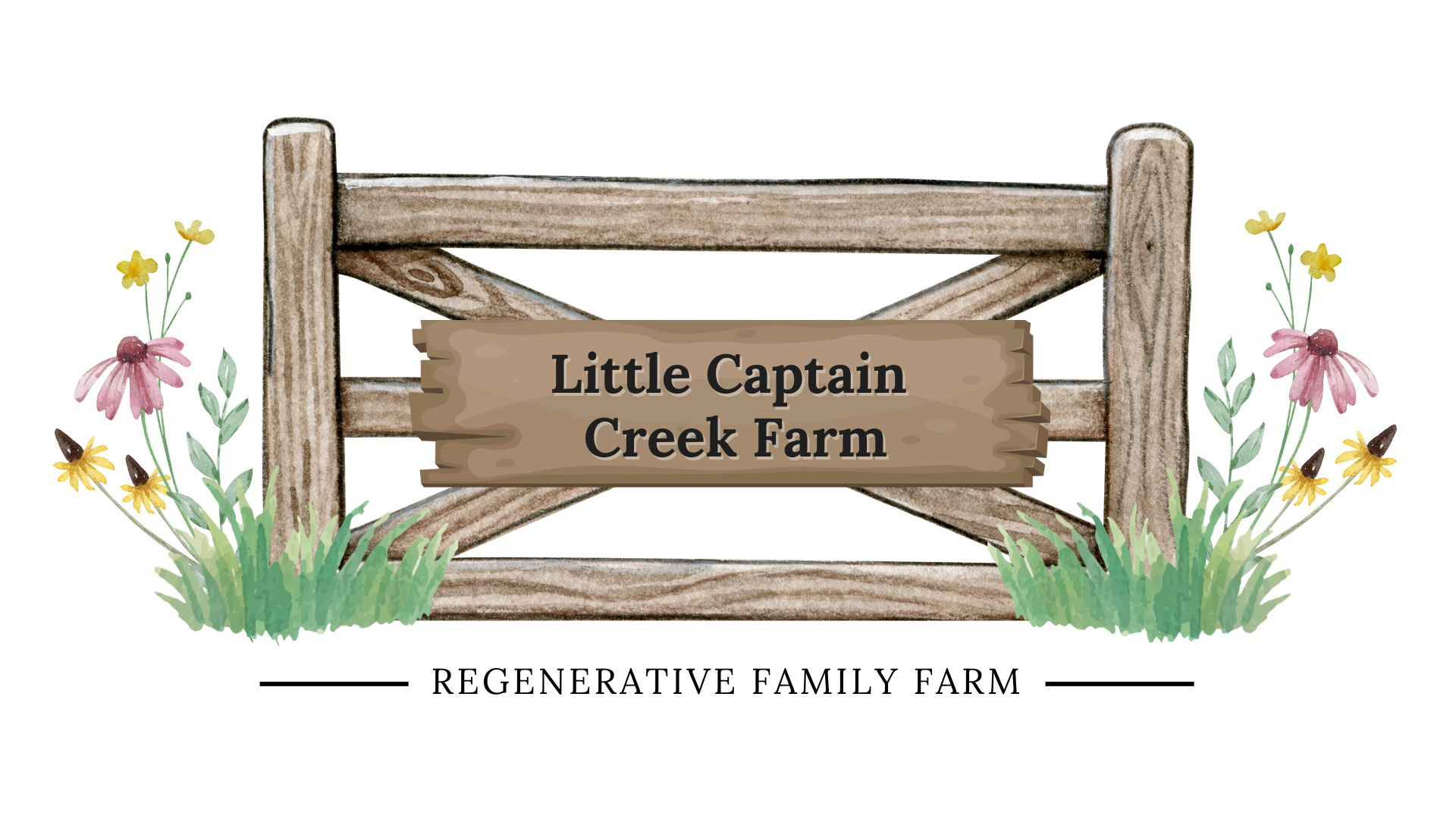Why Our Pork Is Different — And Why That Matters
posted on
July 5, 2025

At Little Captain Creek Farm, pork is more than just a product — it’s part of a bigger commitment to land health, animal welfare, and traditional nourishment.
🐖 Conventional vs. Regenerative: What's the Difference?
Most pork in the U.S. is produced in confined animal feeding operations (CAFOs). These pigs are typically raised indoors, fed a steady diet of genetically modified corn and soy, and never touch a blade of grass. These systems may be efficient, but they come at a cost — to the land, to the animals, and to your plate.
At Little Captain Creek, we do things differently. Our pigs are raised on pasture, where they can root, roam, and express their natural behaviors. They're fed a corn- and soy-free diet, and raised without GMOs, antibiotics, or confinement. This is regenerative farming — an approach that works with nature to rebuild soil health, support animal wellbeing, and produce more nutrient-dense food.
🌾 Corn & Soy Free: What That Means for You
Why does corn and soy matter so much?
These ingredients are extremely high in polyunsaturated fatty acids (PUFAs) — especially linoleic acid — which are passed through to the fat of the animal. When pigs consume a diet rich in corn and soy, their fat tends to reflect those same high PUFA levels.
Our pigs are raised without these feed ingredients, and while we can’t make specific nutritional claims, this type of feeding protocol may result in pork with a more favorable fat profile — one that’s closer to traditional lard, with a higher proportion of saturated and monounsaturated fats and potentially lower PUFA content.
🔥 What’s the Big Deal About PUFAs?
PUFAs — particularly when consumed in excess — can contribute to oxidative stress and inflammation in the body. Industrial seed oils like soybean, corn, and canola oil are very high in PUFAs and have become a major part of the modern diet. This is a big shift from traditional fats like butter, tallow, and lard, which are more stable and less prone to oxidation.
While we need some PUFAs for health, balance and quality matter. Choosing animal fats from thoughtfully raised animals is one way to reduce reliance on processed seed oils and support a more traditional, whole-food approach to eating.
🥬 Traditional Ways to Enjoy Pork
For generations, pork was a staple in traditional diets — not just the meat, but the fat, bones, and organs too. Here are some ways to get the most from your pasture-raised pork:
- Cook with lard: It’s shelf-stable, clean-burning, and delicious for roasting or baking.
- Pair fatty cuts with fermented foods: Sauerkraut, kimchi, and pickled vegetables help support digestion and nutrient absorption.
- Use the bones and fat: Make broth, render lard, and explore nose-to-tail cooking — the way our ancestors did.
- Choose slow-cooking: Roasts, braises, and stews preserve flavor and nutrients.
🥩 Ready to bring home pork raised with intention and integrity?
Shop our corn- and soy-free, pasture-raised pork and taste the difference that regenerative farming can make.



